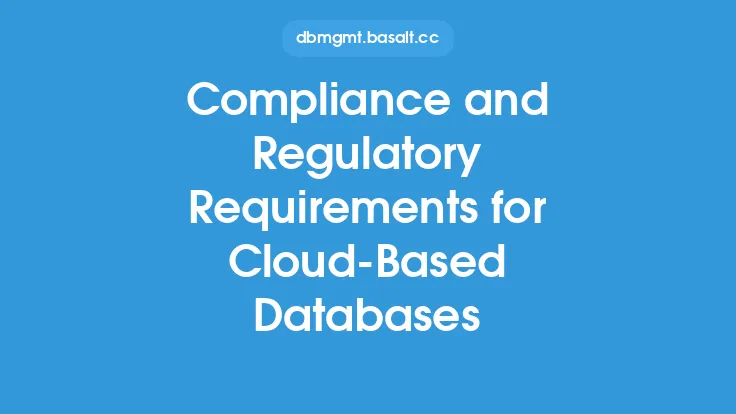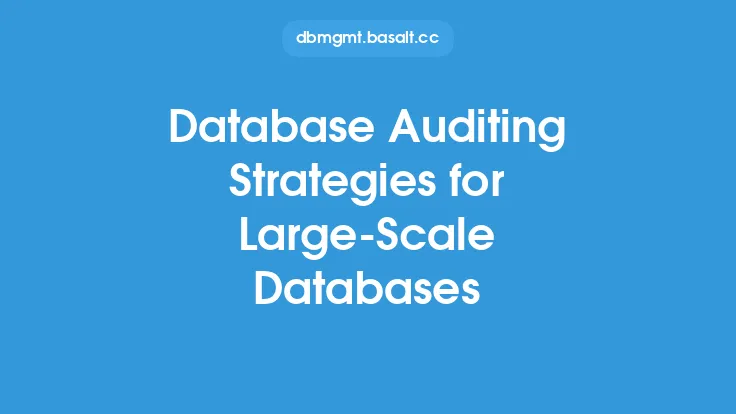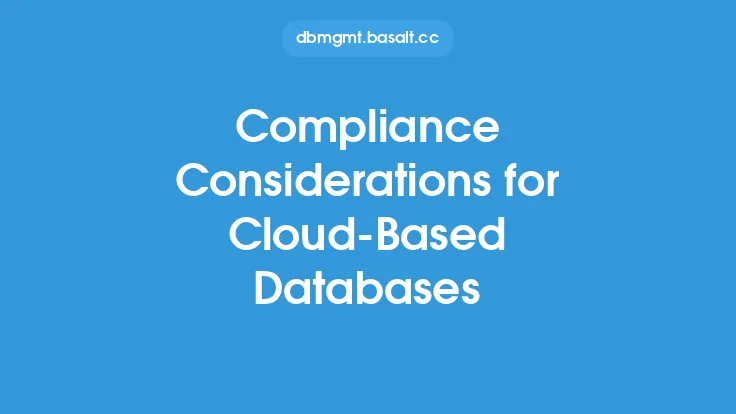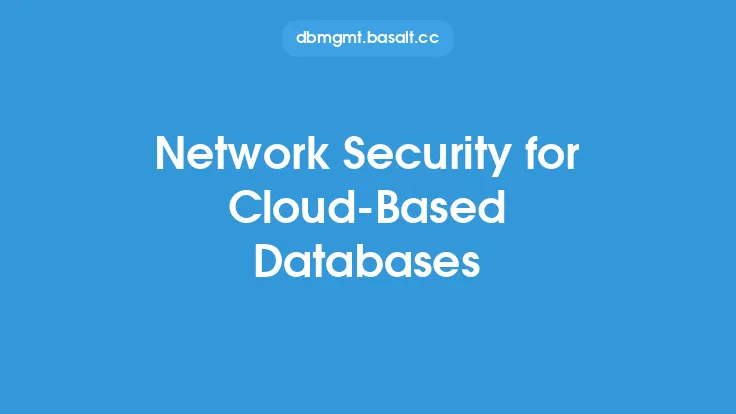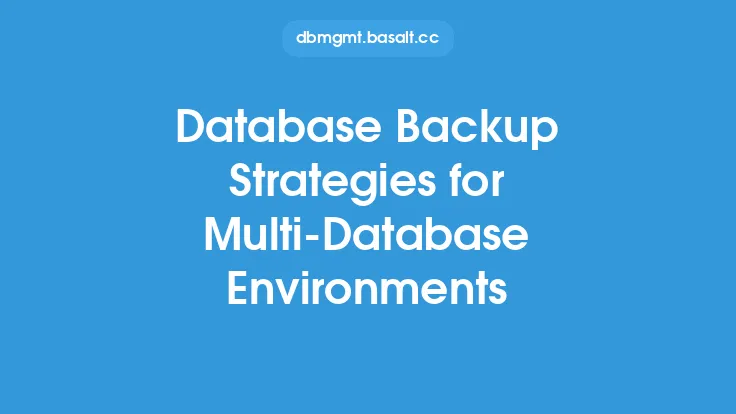When it comes to cloud-based databases, having a solid backup strategy in place is crucial for ensuring data protection and business continuity. Cloud-based databases offer a range of benefits, including scalability, flexibility, and cost-effectiveness, but they also introduce new challenges when it comes to backup and recovery. In this article, we'll explore the key considerations for evaluating database backup strategies for cloud-based databases, and provide guidance on how to choose the best approach for your organization.
Introduction to Cloud-Based Database Backup Strategies
Cloud-based databases require a different approach to backup and recovery than traditional on-premises databases. With cloud-based databases, data is stored in a remote location, and backup and recovery processes must be designed to accommodate this architecture. There are several factors to consider when evaluating database backup strategies for cloud-based databases, including data size, data type, recovery time objectives (RTOs), and recovery point objectives (RPOs). Additionally, cloud-based databases often have built-in backup and recovery features, but these may not be sufficient to meet the needs of all organizations.
Types of Database Backup Strategies for Cloud-Based Databases
There are several types of database backup strategies that can be used for cloud-based databases, including:
- Full backups: These involve backing up the entire database, including all data and metadata.
- Incremental backups: These involve backing up only the data that has changed since the last backup.
- Differential backups: These involve backing up all data that has changed since the last full backup.
- Transaction log backups: These involve backing up the transaction log, which contains a record of all changes made to the database.
Each of these strategies has its own advantages and disadvantages, and the best approach will depend on the specific needs of your organization.
Considerations for Evaluating Database Backup Strategies
When evaluating database backup strategies for cloud-based databases, there are several key considerations to keep in mind. These include:
- Data size and growth rate: Larger databases require more storage and bandwidth for backup and recovery, and may require more frequent backups to meet RTOs and RPOs.
- Data type and format: Different types of data, such as structured and unstructured data, may require different backup and recovery approaches.
- Recovery time objectives (RTOs): RTOs specify the amount of time that an organization can tolerate being without access to its data, and backup and recovery processes must be designed to meet these objectives.
- Recovery point objectives (RPOs): RPOs specify the amount of data that an organization can tolerate losing in the event of a failure, and backup and recovery processes must be designed to meet these objectives.
- Security and compliance: Backup and recovery processes must be designed to meet security and compliance requirements, such as encryption and access controls.
- Cost and scalability: Backup and recovery processes must be designed to be cost-effective and scalable, to accommodate growing data sets and changing business needs.
Cloud-Based Database Backup Tools and Technologies
There are a range of cloud-based database backup tools and technologies available, including:
- Cloud-based backup services, such as Amazon S3 and Microsoft Azure Backup.
- Database-specific backup tools, such as Oracle RMAN and SQL Server Backup.
- Third-party backup and recovery tools, such as Commvault and Veritas NetBackup.
Each of these tools and technologies has its own strengths and weaknesses, and the best approach will depend on the specific needs of your organization.
Best Practices for Implementing Database Backup Strategies
To ensure the effectiveness of your database backup strategy, it's essential to follow best practices for implementation. These include:
- Developing a comprehensive backup and recovery plan that meets RTOs and RPOs.
- Testing backup and recovery processes regularly to ensure they are working correctly.
- Monitoring backup and recovery processes to ensure they are completing successfully and meeting RTOs and RPOs.
- Storing backup data in a secure and compliant manner, such as using encryption and access controls.
- Reviewing and updating the backup and recovery plan regularly to ensure it remains effective and aligned with changing business needs.
Conclusion
Evaluating database backup strategies for cloud-based databases requires careful consideration of several key factors, including data size, data type, RTOs, RPOs, security, and cost. By understanding the different types of database backup strategies available, and following best practices for implementation, organizations can ensure the effectiveness of their backup and recovery processes and meet their business continuity objectives. Whether you're using a cloud-based backup service, a database-specific backup tool, or a third-party backup and recovery tool, the key is to develop a comprehensive backup and recovery plan that meets your organization's specific needs and ensures the protection and availability of your critical data.

